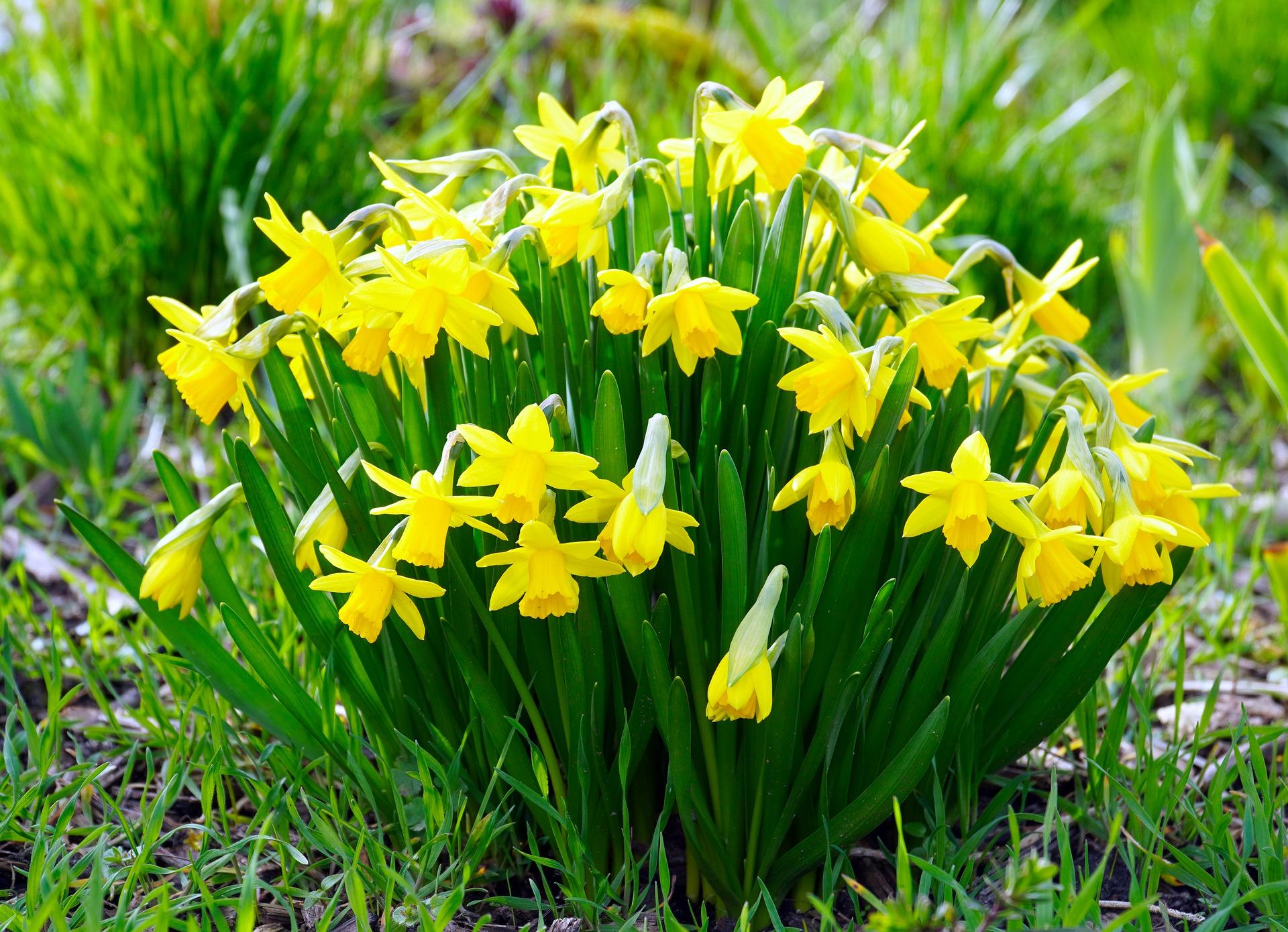The Cheerful Faces of Daffodils
When spring rolls around, and you start seeing those bright yellow, trumpet-shaped flowers popping up, chances are you’re looking at daffodils. These guys are like the sunshine of the early garden, bringing a burst of color after the often-dreary days of winter. They’re not just yellow, though! You can find daffodils in shades of white, cream, orange, and even pink, sometimes with lovely combinations of these colors in a single bloom.
Daffodils belong to the genus Narcissus, which is a pretty fancy-sounding name for such a cheerful flower. You might hear them called jonquils or paperwhites too, but technically, those are close relatives within the same Narcissus family. True daffodils usually have that distinct trumpet or corona in the center, surrounded by six petal-like segments called the perianth.
These plants are real troopers. They’re perennials, which means once you plant them, they’ll come back year after year without much fuss. They grow from bulbs, which are like little underground storage units packed with everything the plant needs to survive and bloom. This makes them pretty resilient and easy to grow in a lot of different climates.

Planting Your Own Daffodils
If you’re thinking about adding some of these happy blooms to your garden, fall is the time to get those bulbs in the ground, usually a few weeks before the first hard frost. They like well-drained soil and a spot that gets at least some sunshine. Dig a hole about twice as deep as the bulb is tall, pop it in with the pointy end facing up, and cover it with soil. Then, just wait for spring!
One of the great things about daffodils is that they’re not too picky. They don’t need a ton of pampering, and they’re even known to be deer and rabbit resistant, which is a big plus for gardeners who have trouble with those furry visitors nibbling on their plants.
More Than Just a Pretty Flower

Beyond their good looks, daffodils have a bit of history and folklore attached to them. The name Narcissus comes from a Greek myth about a beautiful young man who was so in love with his own reflection that he stared at it until he died and turned into a flower. While the story is a bit sad, the beauty of the flower certainly lives on.
Different cultures have also associated daffodils with various meanings. In some places, they symbolize rebirth and new beginnings because they’re one of the first flowers to bloom in spring. In Wales, the daffodil is the national flower and is worn on St. David’s Day.
The Variety is the Spice of Life (and Daffodils!)
What’s really cool about daffodils is the sheer number of different types you can find. Plant breeders have been busy creating all sorts of hybrids with different flower shapes, sizes, and colors. You can find tiny little daffodils that only stand a few inches tall, as well as larger, more dramatic varieties. Some have single flowers per stem, while others boast clusters of blooms. And the trumpets can be long and prominent, short and frilly, or even split into interesting shapes.
:strip_icc()/blooming-daffodils-101561269-0936a6d168f747d3a9854bd94e6012b5.jpg)
This variety means you can really have fun planning your garden to have daffodils blooming at different times throughout the spring, extending that cheerful display for weeks.
Taking Care of Your Daffodils
Once your daffodils have finished blooming, don’t be tempted to cut back the foliage right away. The leaves are still working hard, photosynthesizing and storing energy in the bulb for next year’s flowers. Let the leaves die back naturally. You can then tidy them up once they’ve turned yellow and brown.
Generally, daffodils don’t need a lot of fertilizer. A balanced fertilizer applied in the fall when you plant them can be beneficial, and maybe another light feeding after they bloom can help replenish their energy stores.
In Conclusion
Daffodils are more than just pretty spring flowers. They’re resilient, relatively easy to grow, and come in a stunning array of colors and forms. Their cheerful blooms are a welcome sight after winter, and their ability to return year after year makes them a valuable addition to any garden. Whether you’re drawn to the classic yellow trumpet or the more unusual pink and double varieties, daffodils offer a touch of springtime magic that’s hard to resist.
Frequently Asked Questions About Daffodils
Are daffodils poisonous?
Yes, daffodils contain alkaloids that can be toxic if ingested, especially the bulb. It’s important to keep them away from young children and pets who might be tempted to eat them.
When is the best time to plant daffodil bulbs?
Fall, about 4-6 weeks before the ground freezes in your area, is the ideal time to plant daffodil bulbs. This gives them time to establish roots before winter.
How long do daffodil flowers typically last?
Daffodil blooms can last for about one to two weeks, depending on the variety and the weather conditions. Cooler temperatures tend to prolong the flowering period.
Do daffodils need a lot of sunlight?
Daffodils thrive in full sun (at least 6 hours of direct sunlight per day) but can also tolerate partial shade, especially in hotter climates.
Can I grow daffodils in containers?
Daffodil Plant
